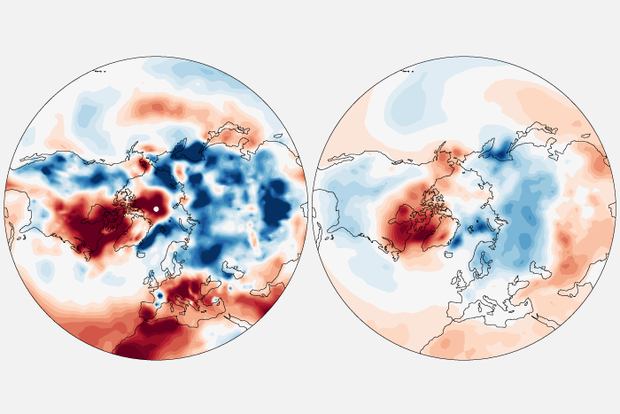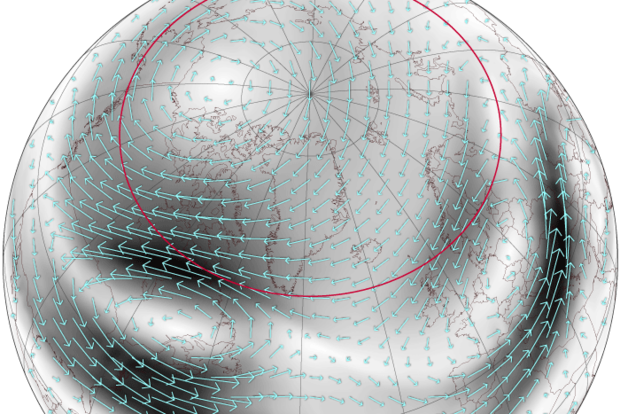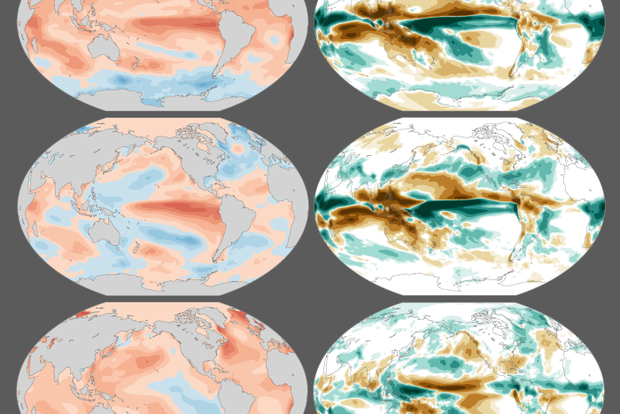Blogs
El Niño weakened substantially over the past month, and we think a transition to neutral conditions is imminent. There’s a 69% chance that La Niña will develop by July–September (and nearly 50-50 odds by June-August). Let’s kick off the ENSO Blog’s tin anniversary with our 121st ENSO outlook update!
Attention!
First things first: our beloved editor, Rebecca Lindsey, has trained us all very well, including being sure to acquaint our newer readers with the fundamentals of the El Niño/Southern Oscillation climate pattern, or ENSO. ENSO has two opposite phases, La Niña and El Niño, which change the ocean and atmospheric circulation in the tropics. Those changes start in the Pacific Ocean a…
Read article
As polar vortex season winds down, so does Season 1 of the Polar Vortex Blog. In our final post of the season, we discuss whether the season is ending on a cliffhanger or just tying up loose ends.
Season finale of the polar vortex
The polar stratospheric west-to-east winds have been steadily weakening and as of April 28, the winds at 60 degrees North, 10-hPa reversed direction, becoming east-to-west. As mentioned in the previous post, this breakdown of the polar vortex isn’t a shocking cliffhanger, but rather the final stratospheric warming that occurs every spring as a result of the sun “rising” over the North Pole. Probably the most noteworthy part of the final warming is that it ha…
Read article
Based on some questions from readers and from some stories we’ve seen online in the past month, we’ve come to realize that there may be some confusion about what our experts mean when they talk about there being a “reversal” of the polar vortex. Since my primary role on the blog is to notice when such confusion might happen and try to prevent it, I volunteered to do this unplanned post as penance for having failed to recognize that some of our previous explanations might not have been totally clear.
So, let me explain why we are going to stop saying 'polar vortex reversal.'
It’s a reversal
In previous posts, Amy and Laura explained that we can estimate the strength of the pola…
Read article
Editor’s Note: Clara Deser and Stephen Yeager presented this work at a seminar (video here) in early March 2024, permitted us to share their research, and reviewed this article. They are preparing a manuscript, which is tentatively titled “Predicting the 2023/2024 El Nino and its climate impacts over North America” which will include additional technical details.
Climate scientists are basically cats. Climate forecasts, especially those generated from complex computer models, are their balls of yarn – bundles that hide an entangled mess of complex interactions that lie beneath the surface. We all know what happens when a cat sees a messy, tangled knot of string. They stalk it, pounce, and…
Read article
The El Niño of 2023–24 is weakening. Forecasters estimate an 85% chance that El Niño will end and the tropical Pacific will transition to neutral conditions by the April–June period. There’s a 60% chance that La Niña will develop by June–August. Overall, the forecast this month is very similar to last month, and we continue to expect La Niña for the Northern Hemisphere fall and early winter (around 85% chance).
La Niña and El Niño are opposite phases of the El Niño-Southern Oscillation climate pattern. “ENSO” for short. Just like El Niño, La Niña changes the ocean and atmospheric circulation in the tropics. Those changes start in the Pacific Ocean and then ripple around the world in predi…
Read article




